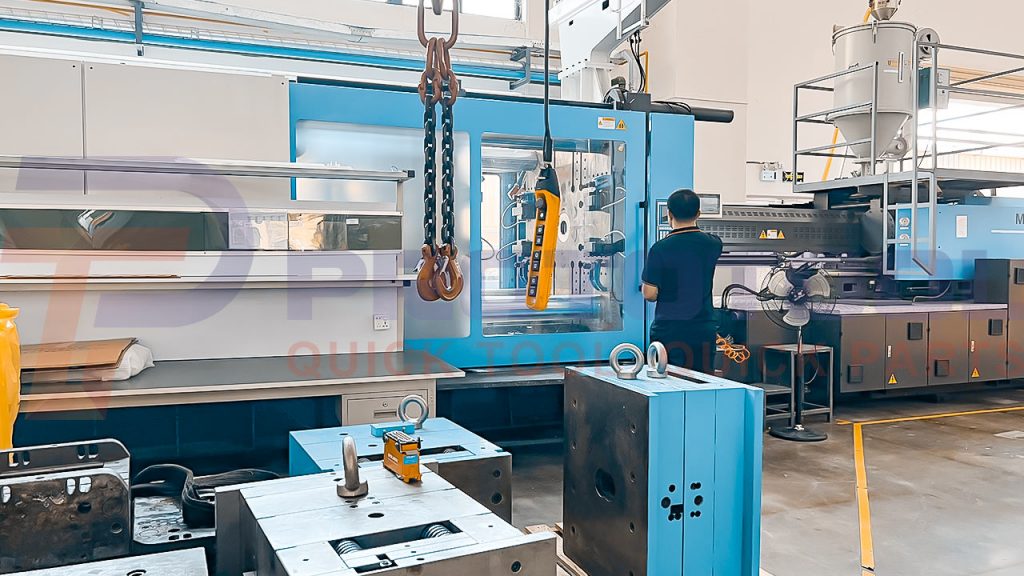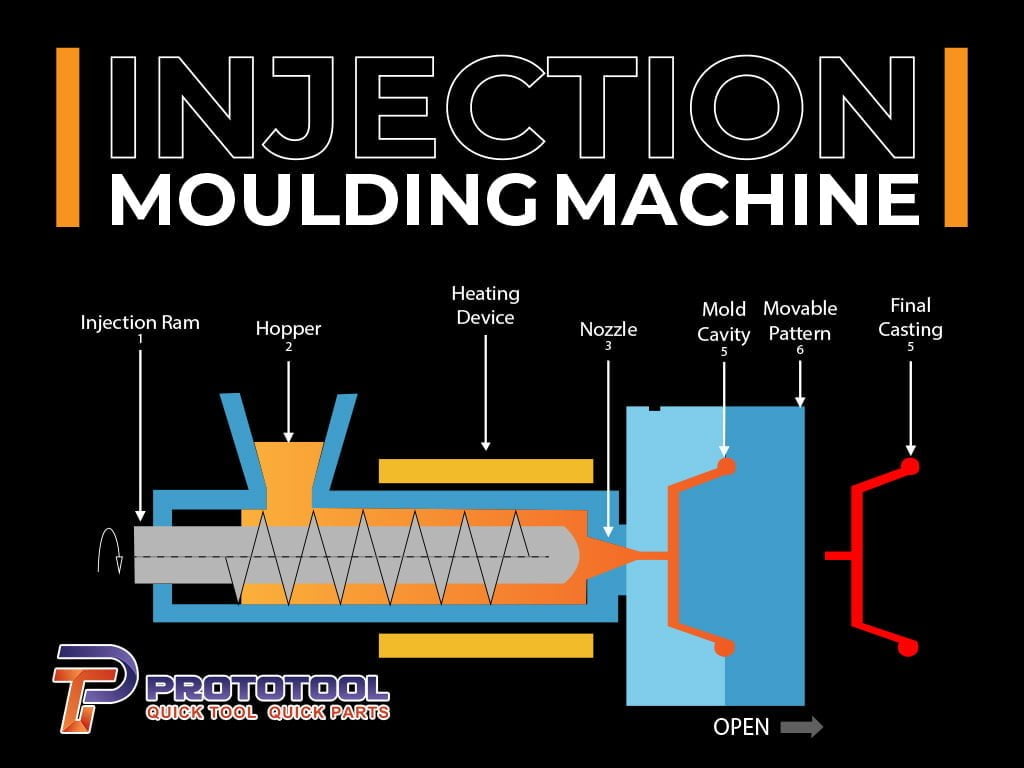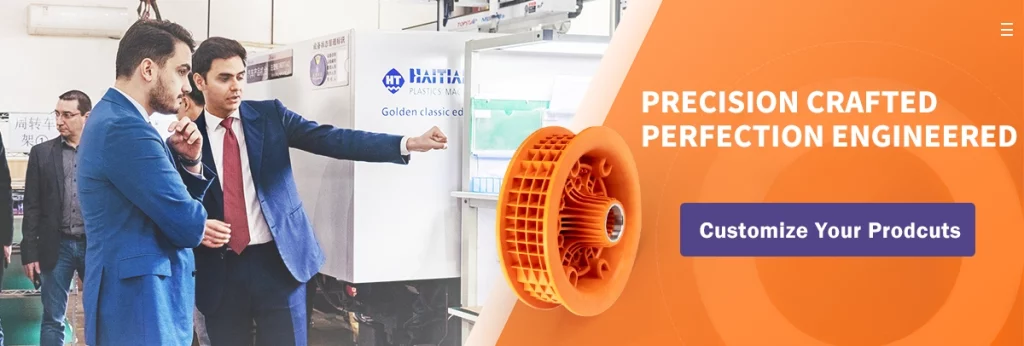Plastic and plastic molding is one of the biggest industry sectors at this date and time. This industry works on developing different plastic parts with the help of different kinds of plastic materials to make new ones. The (plastic) injection molding process is one of the most commonly used processes in the plastic manufacturing industry to manufacture new parts and minimize waste production as much as possible.
Here it is essential to note that the injection molding process has its own advantages and disadvantages, with the pros outweighing the cons in the end. It is a fast and time-saving process that results in a large quantity of plastic in a brief period of time.

The plastic injection molding process, nowadays, includes materials like thermosets, thermoplastic, metals, or elastomers. However, as the discovery of high-performance plastic emerges in front of us, it is quickly replacing materials like metals, which have been traditionally used in the injection molding process for years.
Injection Molding Process
To put it into simple and basic terms, the process of injection molding includes the following steps:
- Melting of plastic in an injection molding machine
- Injecting the melted plastic into another mold under high pressure, where the melted plastic is cooled, turned into a solid shape, and then released out of the mold through the two mold halves
- Getting a fixed and predetermined plastic product out of the mold

To make this process easy and fast, it is essential to ensure that the parts that play a significant role in the injection molding process are carefully and appropriately designed to facilitate a high-performance molding process.
This plastic injection molding process is generally divided into two parts and handled by two different people, the ‘Plastic Designer’ or ‘Industrial Engineer’ and then the ‘Mold Maker,’ who is essentially responsible for setting all the conditions, materials, features, and the material of the end product in place. This mold maker or toolmaker is also responsible for setting the final properties of the machines used in the injection molding process.
The injection molding process is completed with the help of the following steps in total:
- Placing the mold in the IMM (Injection Molding Machine)
- The machines keep the mold clamp closed before, during, or after the ongoing injection molding process.
- Before the plastic is fed to the IMM, it is turned into the form of pellets or granules.
- The plastic is heated until it turns into a liquid form inside the IMM
- Then injection pressure occurs, where the melted plastic is injected into the mold through the injection molding machine nozzle
- The liquid plastic, filled in the mold’s cavity, is then cooled down to transform into a solid form
- In the final step, the solid plastic mold is pushed out of the machine injectors and shaped into the last and finished part

Furthermore, on this subject, there is also an option of cutting the plastic injection molding process time or cost. This can be done by cutting down either one of the times of the process, which is divided into 3 different parts;
- the time of plastic injection
- plastic cooling time
- the time of resetting or changing over
If one wishes to cut down on time or the end cost of the whole process, one can cut down on either one of the process’s duration, and it also helps increase the final rate of plastic production.
The final product of the injection molding process is then utilized for several different purposes and industries in the real world. The plastic parts and products created through the plastic injection molding process are then used in various industries, including the Automotive industry, Defense and Aerospace industry, different kinds of consumer products, semiconductors and electronics industries, dental and medical industry, hardware setup industry, energy industry, robotics industry, purchasing and supply chain industry, and more than anything else.
Furthermore, it is mainly used in the industrial sector of countries. As the injection molding process produces a large number of plastic products, they can be used anywhere in different industries in abundance, as plastic has become a necessity for most industries and sectors of our world.
Advantages of the Injection Molding Process
Highly Efficient and Fast Production
Injection molding is one of the plastic industry’s most used and preferred processes because its fast production results enable many parts in an hour. The speed of the process usually depends on and can be adjusted based on the size and complexity of the mold.
Reduced Labor Costs
The injection molding process is also an automated process that is maneuvered and managed by machines without the help of much labor. Often, one labor is enough to manage a single machine. This helps in reducing labor and overhead costs in the end.
Flexibility in Design
The high-pressure molding in plastic injection molding machines allows for better design flexibility, as more intricate and detailed designs can be imprinted on the plastic in these machines.
High-Level Production
It is a highly efficient production process that enables thousands of products in an immensely reduced time duration.
Large Choice in Materials
The plastic injection molding machines allow more materials to be used. Not only that, but the machine also enables the usability of more than one material simultaneously in production.
Low Rates of Scrap
Compared to the traditional injection molding processes, this process gives off an immensely reduced scrap rate by the end of production.
Including Inserts Ability
This process also enables the plastic or metal inserts to be molded quickly and more efficiently because of the high-pressure machines.
Cost-Effective
The injection molding process is automated and handled mainly by giant machines, not by manpower or labor. So most of the cost that goes into this process is spent on purchasing, operating, and maintaining the humongous machines of the process. Other than that, once the plastic injections have been converted into a mold, the production cost of every component decreases, specifically when produced in bigger batches.
Repeatable and Consistent
This process is also consistent and repeatable, which means that this process of injection molding enables the production of millions of identical products with ease.

Some Disadvantages of the Injection Molding Process
Long Setup Time and High Cooling Costs
First, one of the biggest disadvantages of this plastic injection molding process is the overhead costs. This is because this process requires an initial set of designing and prototyping, then the designing of the tool used in prototype molding, and then the overhead costs of testing before the process can officially begin.
Restrictions on Part Designs
Another challenge of this process is that every plastic must be designed, considering the injection molding and following the basic injection molding rules at any cost. For instance:
- Strict avoidance of sharp edges and undercuts
- Keep the thickness of the walls of the plastic part uniform so that no inconsistencies come in the way of an efficient cooling process and avoid resulting in sink marks.
- The same draft angles are enabled for improved and enhanced de-molding.
Another disadvantage of this process is the inability to change designs once they have been created firmly with materials like aluminum and steel.
To add any amount of plastic to a part, one will need to cut the cavity in large sizes along with steel or aluminum. But on the other hand, if you want to remove plastic from the mold, you will need to cut down on the large tool cavity size by including more metal or aluminum in the mold. This, in many cases, can get extremely difficult as one might be required to scrap the whole piece and start all over again.
As well as, the larger the size, the more expensive and difficult it will get to scrap and remanufacture it all over again.
Smaller Batch Parts Run Prove to be Costly
This process requires all the used material to be thrown out before another production batch can start, making the small run parts more costly and time-consuming. Not only this, but this process also requires a complex tooling process. This is why small run parts or batches of plastic injection molding are always considered too expensive and avoided by many.
Final Word
Do you have a booming, market-million-dollar plastic injection molding process setup idea? Leave it to Prototool. We will take your idea and turn it into an approachable, reliable, and valuable product without you even worrying. Prototool work with efficiency and effectiveness to turn your dreams into reality regarding plastic molding. We are a leading service provider for rapid prototyping and mass production in all of China. Come to Prototool for the most effective, adaptive, quick, and unique mass production and prototyping services!










